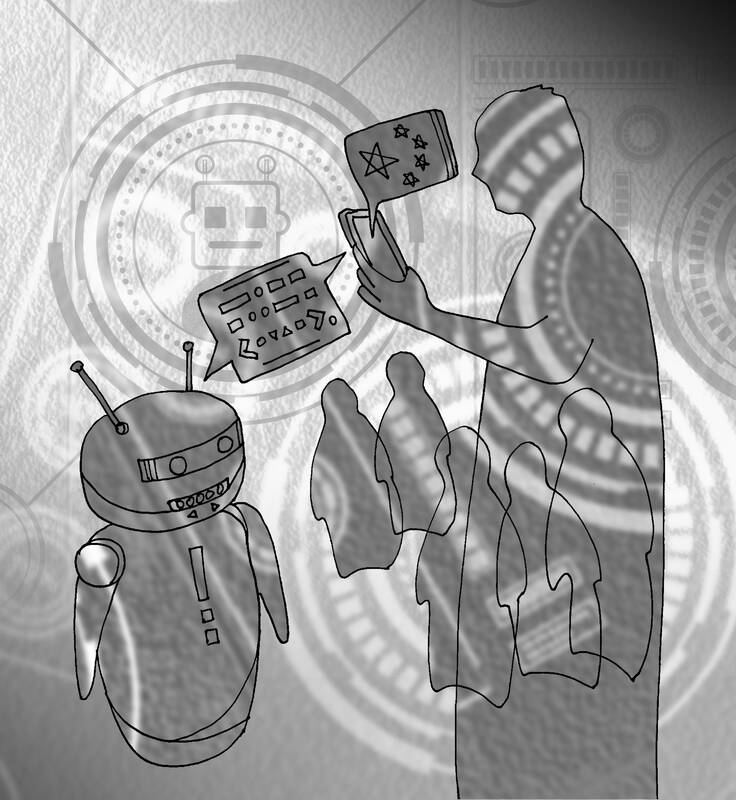Beijing’s rigorous push for chatbots with core socialist values is the latest roadblock in its effort to catch up to the US in a race for artificial intelligence (AI) supremacy. It is also a timely reminder for the world that a chatbot cannot have its own political beliefs, the same way it cannot be expected to make human decisions.
It is easy for finger-wagging Western observers to jump on recent reporting that China is forcing companies to undergo intensive political tests as more evidence that AI development would be kneecapped by the government’s censorship regime. The arduous process adds a painstaking layer of work for tech firms, and restricting the freedom to experiment can impede innovation. The difficulty of creating AI models infused with specific values would likely hurt China’s efforts to create chatbots as sophisticated as those in the US in the short term. However, it also exposes a broader misunderstanding around the realities of AI, despite a global arms race and a mountain of industry hype propelling its growth.
Since the launch of OpenAI’s ChatGPT in late 2022 initiated a global generative AI frenzy, there has been a tendency from the US to China to anthropomorphize this emerging technology, but treating AI models like humans, and expecting them to act that way, is a dangerous path to forge for a technology still in its infancy. China’s misguided approach should serve as a wake-up call.

Illustration: Tania Chou
Beijing’s AI ambitions are already under severe threat from all-out US efforts to bar access to advanced semiconductors and chipmaking equipment. However, Chinese Internet regulators are also trying to impose political restrictions on the outputs from homegrown AI models, ensuring their responses do not go against Chinese Communist Party ideals or speak ill of leaders like Chinese President Xi Jinping (習近平). Companies are restricting certain phrases in the training data, which can limit overall performance and the ability to spit out accurate responses.
Moreover, Chinese AI developers are already at a disadvantage. There is far more English-language text online than Chinese that can be used for training data, not even counting what is already cut off by the Great Firewall. The black box nature of large language models (LLM) also makes censoring outputs inherently challenging. Some Chinese AI companies are now building a separate layer onto their chatbots to replace problematic responses in real time.
However, it would be unwise to dismiss all this as simply restricting its tech prowess in the long run.
Beijing wants to be the global AI leader by 2030, and is throwing the entire might of the state and private sector behind this effort. The government reiterated its commitment to develop the high-tech industry during last week’s Third Plenum, and in racing to create AI their own way, Chinese developers are also forced to approach LLMs in novel ways. Their research could potentially sharpen AI tools for harder tasks that they have traditionally struggled with.
Tech companies in the US have spent years trying to control the outputs from AI models and ensure they do not hallucinate or spew offensive responses — or, in the case of Elon Musk, ensure responses are not too “woke.” Many tech giants are still figuring out how to implement and control these types of guardrails.
Earlier this year, Alphabet Inc’s Google paused its AI image generator after it created historically inaccurate depictions of people of color in place of white people. An early Microsoft AI chatbot dubbed “Tay” was infamously shut down in 2016 after it was exploited on Twitter and started spitting out racist and hateful comments. As AI models are trained on gargantuan amounts of text scraped from the Internet, their responses risk perpetuating the racism, sexism and myriad other dark features baked into discourse there.
Companies like OpenAI have since made great strides in reducing inaccuracies, limiting biases and improving the overall outputs from chatbots — but these tools are still just machines trained on the work of humans. They can be re-engineered and tinkered with, or programmed not to use racial slurs or talk politics, but it is impossible for them to grasp morals or their own political ideologies.
China’s push to ensure chatbots toe the party line may be more extreme than the restrictions US companies are self-imposing on their AI tools. However, these efforts from different sides of the globe reveal a profound misunderstanding of how we should collectively approach AI.
The world is pouring vast swaths of money and immense amounts of energy into creating conversational chatbots.
Instead of trying to assign human values to bots and use more resources to make them sound more human, we should start asking how they can be used to help humans.
Catherine Thorbecke is a Bloomberg Opinion columnist covering Asia tech. Previously she was a tech reporter at CNN and ABC News. This column does not necessarily reflect the opinion of the editorial board or Bloomberg LP and its owners.
I came to Taiwan to pursue my degree thinking that Taiwanese are “friendly,” but I was welcomed by Taiwanese classmates laughing at my friend’s name, Maria (瑪莉亞). At the time, I could not understand why they were mocking the name of Jesus’ mother. Later, I learned that “Maria” had become a stereotype — a shorthand for Filipino migrant workers. That was because many Filipino women in Taiwan, especially those who became house helpers, happen to have that name. With the rapidly increasing number of foreigners coming to Taiwan to work or study, more Taiwanese are interacting, socializing and forming relationships with
Two weeks ago, Malaysian actress Michelle Yeoh (楊紫瓊) raised hackles in Taiwan by posting to her 2.6 million Instagram followers that she was visiting “Taipei, China.” Yeoh’s post continues a long-standing trend of Chinese propaganda that spreads disinformation about Taiwan’s political status and geography, aimed at deceiving the world into supporting its illegitimate claims to Taiwan, which is not and has never been part of China. Taiwan must respond to this blatant act of cognitive warfare. Failure to respond merely cedes ground to China to continue its efforts to conquer Taiwan in the global consciousness to justify an invasion. Taiwan’s government

Earlier signs suggest that US President Donald Trump’s policy on Taiwan is set to move in a more resolute direction, as his administration begins to take a tougher approach toward America’s main challenger at the global level, China. Despite its deepening economic woes, China continues to flex its muscles, including conducting provocative military drills off Taiwan, Australia and Vietnam recently. A recent Trump-signed memorandum on America’s investment policy was more about the China threat than about anything else. Singling out the People’s Republic of China (PRC) as a foreign adversary directing investments in American companies to obtain cutting-edge technologies, it said
The recent termination of Tibetan-language broadcasts by Voice of America (VOA) and Radio Free Asia (RFA) is a significant setback for Tibetans both in Tibet and across the global diaspora. The broadcasts have long served as a vital lifeline, providing uncensored news, cultural preservation and a sense of connection for a community often isolated by geopolitical realities. For Tibetans living under Chinese rule, access to independent information is severely restricted. The Chinese government tightly controls media and censors content that challenges its narrative. VOA and RFA broadcasts have been among the few sources of uncensored news available to Tibetans, offering insights